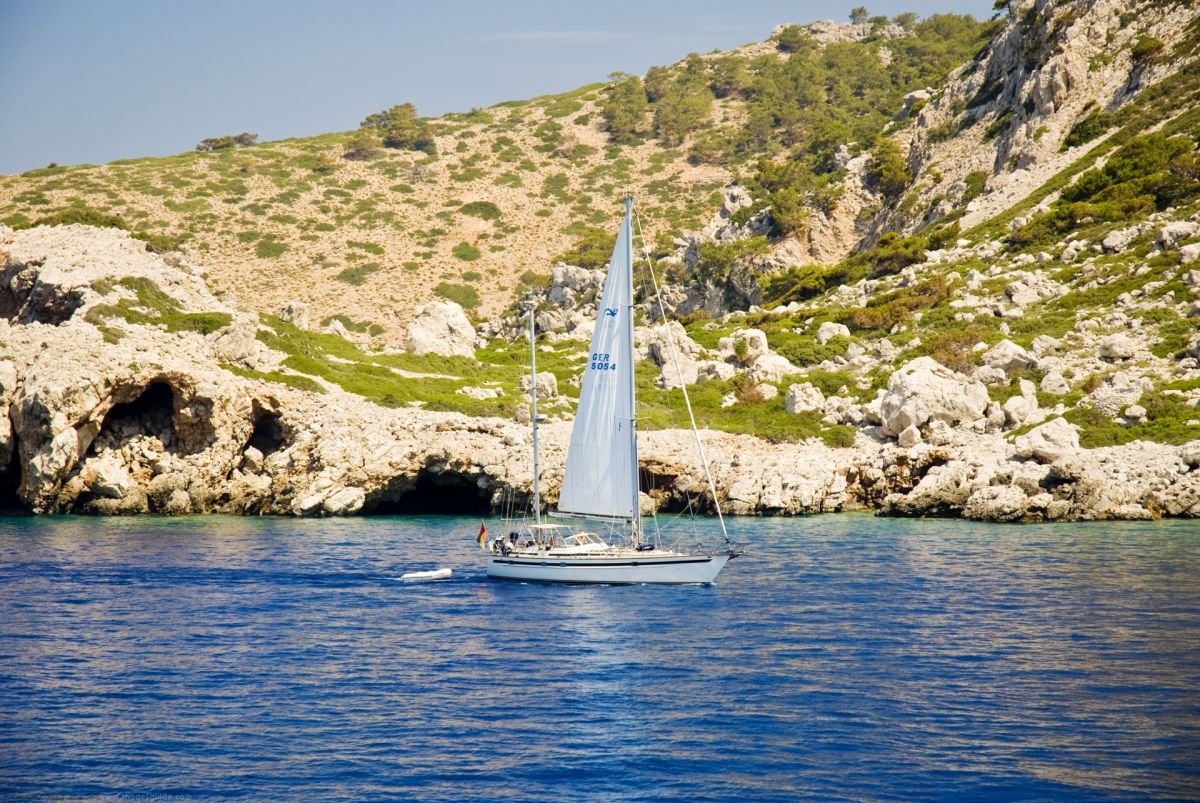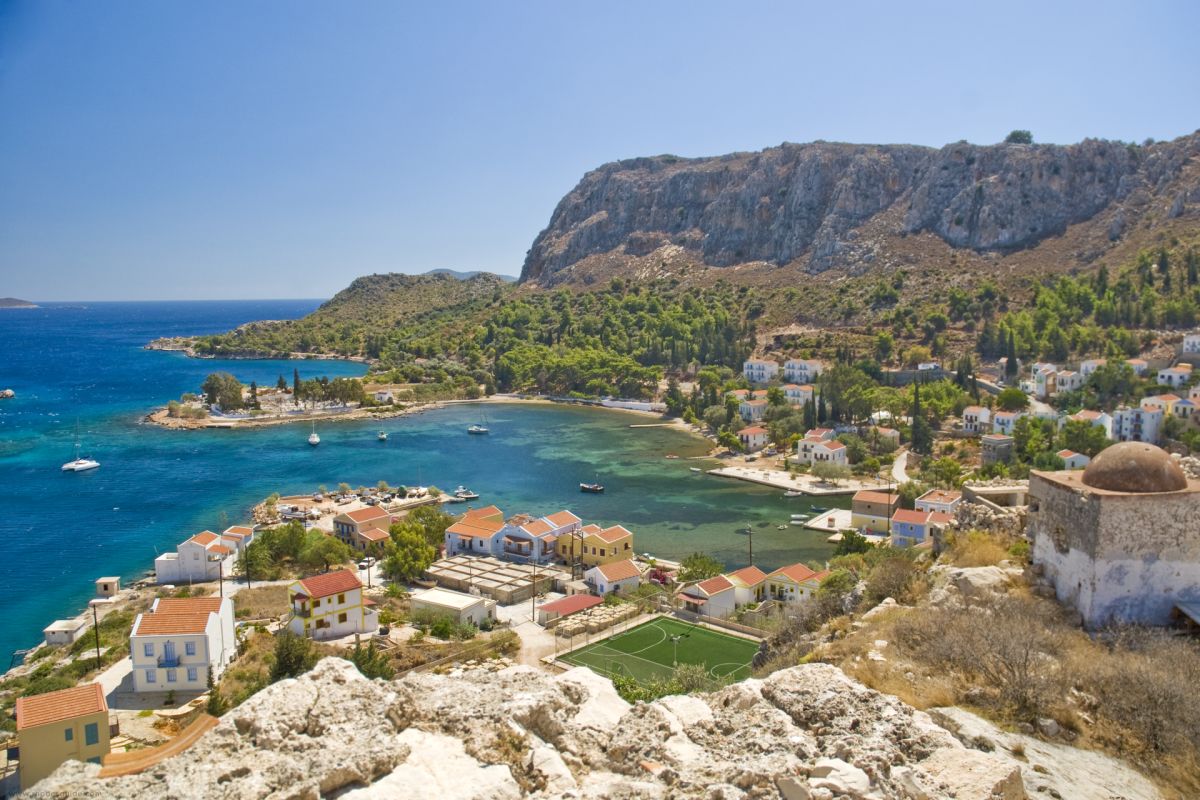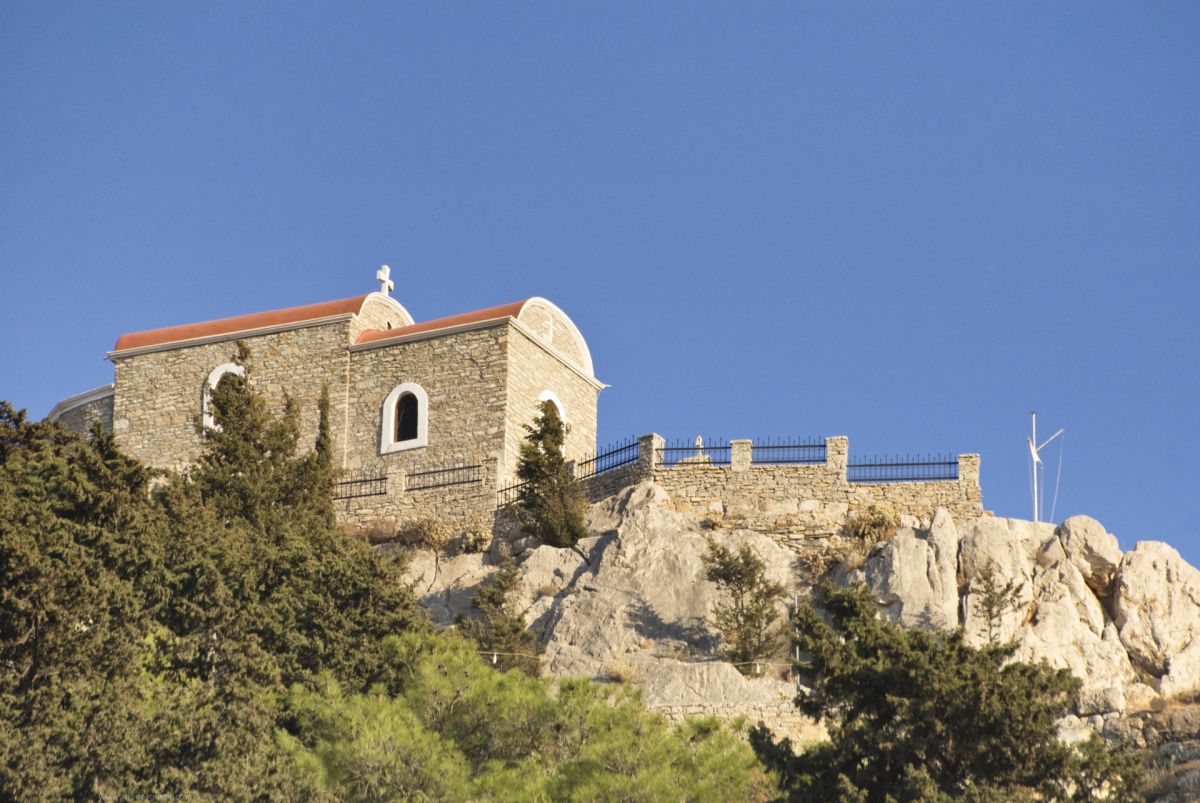Despite its varied cultural influences, the Greek character remained unaltered until the reunification with the motherland after the 2nd World War. The Dodecanese is a fascinating destination where history comes alive, and visitors can immerse themselves in a unique blend of cultures and traditions.
Position of the Dodecanese islands
The Dodecanese or Dodecanisos is the name of the island complex in the south eastern Aegean. They are situated between the islands of Crete, the Cyclades, lkarias, Samos and the Asia Minor seaboard.
All islands of the Dodecanese are connected to the mainland and other islands daily by ferries, while there are also regular flights to the larger islands. The two largest islands, Rhodes and Kos, have a cosmopolitan flair and are literally bursting with life. In the immediate vicinity, however, there are smaller islands with completely different characters and easy going atmosphere, where the visitor is pleasantly surprised.

Patmos, the island of Saint John the Evangelist, attracts visitors from all over the world, while Karpathos proudly retains its traditional character more than any other Dodecanese island. Kalymnos, the island of the sponge divers, has seen a strong increase in holiday numbers in recent years, competing with the beautiful green neighbouring island of Leros which has the most beautiful beaches to offer. Nisyros with its particularly interesting and still active volcano and the distant Astypalea with the enchanting capital Chora offer peace and relaxation.
The smaller islands like Kassos. Lipsi, Agathonisi and Arki are the right places for those who want to escape from the hectic everyday life. Symi and Chalki, the two neighbouring islands of Rhodes, as well as Tilos and the remote island of Kastelorizo all have their own charming character.
Geophysical condition of the Dodecanese
Apart from the twelve main islands of the Dodecanese, which gave the name to the island complex (Rhodes, Astypalia, Kalymnos, Karpathos, Kasos, Kos, Leros, Nysiros, Patmos, Symi, Tilos. Halki), the islets of Lipsi (16 square km), Pserimos (14.6 square km), Agathonisi (13.4 square km), Sari a (11 square km), Kastellorizo (9.1 square km), Levitha (9 square km), Giali (6 square km), Kinaros (4.3 square km) among other islets, barren islets and rock peaks, all constitute the group of islands known as the Dodecanese.Sea shells and crustacean fossils which are found on top of mountains indicate that the formation of this island chain, either wholly or partly, occurred under the surface of the sea. During lengthy and complex geological upheavals, dry land emerged only to be, to a great extent, re-submerged some 3-4 million years ago, leaving only the mountain tops of" Aigaiida" above sea level to form today's Aegean Islands.

The Dodecanese climate is of a transitional type and ranges from temperate to dry tropical climates which is characterized with lots of sunlight and an extended dry summer period.
Dodecanese Fauna & Flora
Forests and bush lands of pine, cypress, wild olive, cedar, mastic. arbutus bush and holly together with a variety of annual and long lasting turf, aromatic plants (oregano, thyme, lavender), carob and olive trees, all make for a rich mosaic of plant varieties. Often on the islets unique plant and animal species have been observed (especially reptiles and invertebrate), remnants of an isolated evolution and adaptation to the unique conditions, which were created when these islets were cut off from the larger islands.

At the same time these islets, from which both human beings and land meat eaters are absent, serve as refuges for ancient species which have disappeared with the passage of time from other areas. Fossil findings, which show the different evolution of animal species on these isolated ecosystems, aren't rare, a prime example being the dwarf elephants of Tilos
The many caves, crevices in the rocks, high rocky formations, and dangerous dins all serve as refuges for rare species of birds such as birds of prey small hawks, wild pigeons, herons and cormorants. Also, due to their geographical position, the islands are a stopover for migrating birds. Tens of millions of these birds visit the islands each spring and autumn.
Quite surprising is the rich sea life found in the Dodecanese seas. The rare Mediterranean seal finds refuge in the coastal caves, together with the dolphins, turtles, many varieties of fish, mollusks and crustaceans which form the rich ecosystem of the Dodecanese Sea. Every single island and islet is of itself a unique natural museum. This of course favors the development of special types of tourism. For example only the island of Kasos boasts 450 plant species, which is more than exist in the whole of Holland.
Dodecanese Diet
The inhabitants of the islands keep to a traditionally light diet. They find nourishment mainly in vegetarian food (vegetables, greens), dairy foods (which are prepared even today by traditional methods), honey of exceptional quality as well as in fresh fish which are cooked according to traditional local recipes.
Activities of the inhabitants
The traditional occupations of the inhabitants in the Dodecanese are farming, animal farming, fishing, sponge diving and trading due to the advantaged position of the islands which lie between Europe, Asia and Africa. For the poorer islands a source of income and therefore development was the monetary exchange coming from Dodecanese emigrants and shipping. Today, the main activities of the inhabitants has to do with tourism. However, many of the traditional occupations still survive such as stone masonry, carpentry and ship building and the women have never ceased producing exceptional textiles, knitted handicrafts and embroideries.
The European Union and the Greek government support development through special programmes, which are helping the islands to participate in the new economic reality.
The Dodecanese islands are: Agathonisi, Astypalia, Karpathos, Kasos, Lipsi, Megisti or Kastellorizo, Nysiros, Tilos and Halki.


 English
English
 Deutsch
Deutsch
 Ελληνικά
Ελληνικά